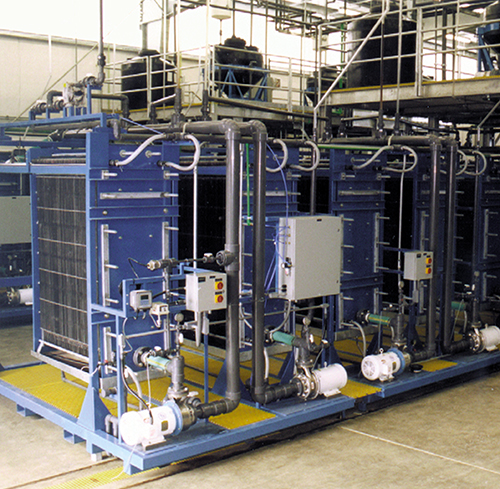Cleaner Landfills
With assembly of the International Space Station underway, scientists have been working to install a water treatment system that will efficiently purify waste products consisting of laundry, shower, hygiene water, and humidity condensation. The treated water will then replenish the clean water supply. However, support systems for the Space Station are subjected to extremely severe restrictions. Because the cost to put each kilogram of mass aboard the Space Station is very expensive, the total mass of the water supply and water purification systems must be kept to an absolute minimum. The Space Station, therefore, needs a system that purifies efficiently, is relatively light, and consumes a low amount of electricity to avoid the necessity of a large solar energy system.
With Small Business Innovation Research (SBIR) funding from NASA's Ames Research Center, Osmotek, Inc., of Corvallis, Oregon, delivered a system that met the stringent criteria for flight aboard the Space Station. The company also brought this technology into the development of their Direct Osmosis (DO) commercial treatment system. This unit differs from most water purification systems by using a direct osmosis process followed by a reverse osmosis treatment. Osmosis is a natural process of diffusing fluid through a semipermeable membrane until the fluid concentration on both sides of the membrane is equal. Reverse osmosis is a natural process used to separate small molecules from large molecules by selective diffusion through the same membrane. The diffusion is provided by pressure across the membrane.
During the course of the SBIR work, Osmotek researchers came up with the idea of using their osmosis technique, not to produce water for consumption, but to extract water from a waste product. The company is marketing the unit for use in landfills, where toxic chemicals, or leachate, can be "leached" into a water source that can eventually reach a river or lake. The company's system can treat leachate onsite at municipal or industrial landfills by filtering the water and leaving behind the leachate, which can then be solidified into a substance that will not seep into water.
Another advantage to the DO system is its ability to reduce membrane fouling. Because of the unique design of Osmotek's DO system, substances on a membrane are prevented from obstructing the filtration process. The unit employs osmotic pressure, which keeps the membrane functioning properly.
After competing with other leachate treatment techniques in extensive testing, a landfill company selected Osmotek's technology for use in western Oregon, where the system has been in operation since July 1998. Osmotek also sold a unit to a food processing company. The company continues to market the product with the intention of promoting safer landfills. The threats posed by waste from landfills are a serious concern among legislators and citizens alike. Advancement in the treatment of such hazards is critical to the preservation of our environment.

Osmotek, Inc.'s Direct Osmosis treatment system is being used to keep a landfill's surroundings clean.













